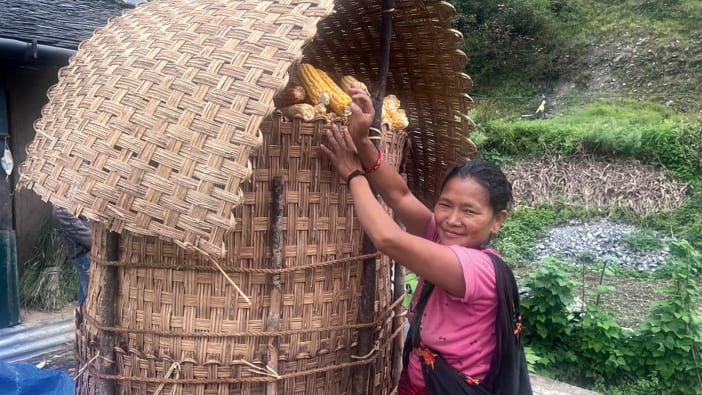Correct feeding of village poultry will not only improve their production of eggs and meat but also keep the chickens healthy – well-fed chickens will produce good food for you. A scavenging hen will lay only 30 to 50 eggs a year, but up to 90 with improved feeding and management.
Think of feeding the poultry as an extension of family food gathering duties, so that when a meal is prepared for the family, the poultry feeding is done as well.
Chickens need a mixed diet to stay healthy, just as people do. They need body-building food (protein), energy food (carbohydrate) and protective food (vitamins and minerals). For example, hens need a supply of calcium and phosphorus from bones and shells to lay eggs with strong shells in good quantities. Chickens of all ages need a constant supply of grit and bone, and clean water.
Food for growing chickens
- In the first two to three weeks of life, chicks should be given finely chopped boiled egg.
- Up to six weeks old, give chicks the same food as grown birds but chop it up in small pieces so it is easier for the chicks to eat.
- From six to eight weeks onwards provide food from the three different food groups in three different containers and allow free choice feeding. The chickens will eat according to their needs.
Body-building foods
Cooked fishing waste, fishmeal, animal offal, earthworms, insects, bean and groundnut (peanut) meal, oil cakes eg soya cake, sunflower cake, groundnut cake (a waste product from oil extraction)
Energy foods
Sorghum, sugarcane, corn, millet, cassava, sunflower, rice and other grains, boiled root crops like yam and sweet potato, animal fat, oil cakes eg copra (coconut) cake, cotton seed cake
Protective foods
Fresh green leaves, fresh green vegetables, grass, paw paw and other fruits, boiled crushed animal bones and eggshells, crushed oyster shells and snail shells, salt
Chickens need to be offered protective foods every day, but the ratio of body-building foods to energy foods they need depends on the age and type of the chicken. This is a guide for what you should expect to provide:

Compiled by Helen Gaw from Kai Kokorako (see Resources page 13) and Practical Village Chicken Production (see pages 8–9).









